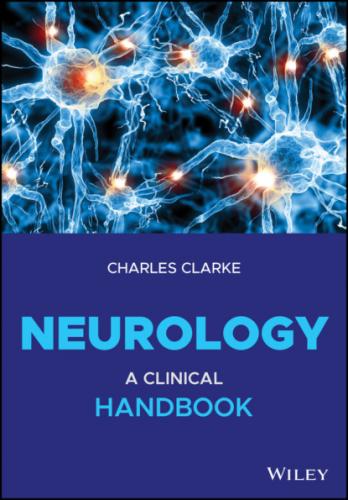In contrast to the anatomical complexity, signs of cerebellar disease are usually straightforward:
A lateral lobe lesion – a tumour or an infarct – causes rebound and past pointing of the upper limb and similar lower limb signs.
A vermis lesion – for example midline medulloblastoma – affects vestibular connection: truncal ataxia can be an early sign.
Nystagmus – coarse, fast phase towards the side of a lesion, sometimes dramatic – is an inconstant feature.
Sensory Pathways
Neurologists deal with the special senses – vision, hearing/balance, olfaction and taste – and the main five sensory modalities: touch, nociception, temperature, joint position, vibration and two‐point position. Neuroscientists use an alternative vocabulary: sensation is either conscious or non‐conscious and either afferent proprioceptive – from a limb, or enteroceptive – from gut, or heart.
Sensory Pathways in the Cord and Brain
Two major pathways deliver sensory information to the thalamus and thence to the cortex (Figure 2.8):
Spinothalamic pathways (nociceptive – pain, temperature);
Posterior columns → medial lemnisci (touch, position, movement, vibration).
Each system consists of three orders of neurones.
First order neurones are in the posterior root (dorsal root) ganglia;
Second order neurones decussate before reaching the thalamus;
Third order neurones project from thalamus to cortex;
There is somatotopic organisation throughout, and transmission can be controlled (inhibited/enhanced) at various stages (see Gate Control & Chapter 23).
Dorsal Root Ganglia
The complexity of the laminae within the posterior horn and the cord pathways are illustrated in Figure 2.9, the detail of which is hard to remember. A single nerve root ganglion can contain around 100,000 neurones, each enshrouded by a modified Schwann cell. Two streams of axons, medial and lateral – the dorsal root afferents – synapse in various specific areas of the cord, to form the two main sensory pathways.
Figure 2.8 Sensory pathways to the cortex. (a) Posterior columns, (b) Spinothalamic tracts.
Source: Champney (2016).
Figure 2.9 Cord cross‐section: dorsal horn laminae, ascending & descending tracts.
Source: Fitzgerald 2010.
Posterior Column→Medial Lemniscus Pathway
The cord posterior columns are formed partly by axons of posterior root ganglia and partly by axons of second order neurones in the dorsal horn of the spinal grey matter. These axons all project to the gracile and cuneate nuclei in the brainstem. Axons then decussate in the medulla to form each medial lemniscus (meniscus means a ribbon) that terminates in the ventral posterior nucleus of the thalamus. Thalamic neurones then project to the somatic sensory cortex.
Spinothalamic Pathway
The anterior and lateral spinothalamic tracts pass from the posterior grey horn to the opposite thalamus. The two tracts merge in the brainstem to form the spinal lemniscus, enter the ventral posterior nucleus of the thalamus and project to the somatic sensory cortex.
Additional sensory pathways are concerned with non‐conscious proprioception, reflex arc excitability, balance between agonists and antagonists, trunk and head orientation, arousal & motor learning:
Posterior spino‐cerebellar tract, cuneo‐cerebellar tract, anterior spino‐cerebellar tract, rostral spino‐cerebellar tract
Spino‐tectal tract, spino‐olivary tract, spino‐reticular fibres.
We cannot recognise lesions of these pathways clinically – they are part of the wider framework of motor and sensory modulation.
The Silent Brain
This section summarises the functional anatomy of the brainstem, reticular formation, limbic system and hippocampus, thalamus, hypothalamus, pituitary, and the little known circumventricular organs – regions I call The Silent Brain.
Brainstem
I find that four points of reference simplify this region:
Each cranial nerve nucleus denotes a different level in the rostral–caudal plane.
Motor pathways lie ventrally.
Sensory pathways lie dorsally.
Reticular formation (RF) nuclei: most lie laterally, but the magnus raphe & median raphe nuclei are midline.
In our invertebrate ancestors, the brainstem was almost the entire forebrain. Olfaction and other sensations were connected, via the brainstem reticular formation (RF) to various movements – and thus to alertness, feeding and survival. With the evolution of the cerebral cortex, the brainstem became, in addition, a conduit connecting cranial nerve nuclei, cortex, cerebellum and cord, but remained the site of the RF and its connections – hence its complexity. What is needed is a general grasp of the levels of these brainstem nuclei (Figure 2.10).
Figure 2.10 Brainstem: lateral view – cranial nerve nuclei.
Source: Hopkins (1993).
The way in which the nuclear arrangements arose is explained by a brief embryological perspective. Seven nuclear columns develop into cranial nerve nuclei.
Motor cranial nerve nuclei:
III, IV, VI and XII arise from a paramedian nuclear mass – known as the general somatic efferent (GSE) column.
V (motor), VII, IX and X (nucleus ambiguus) and XI (spinal accessory nucleus) arise from ventro‐lateral cells – the special visceral efferent (SVE) and general visceral efferent (GVE) columns.
Afferent columns (general & special somatic and visceral afferents – GSA, SSA, SVA, GVA) develop into:
Vth nerve nuclei
Vestibular nuclei
Tractus
